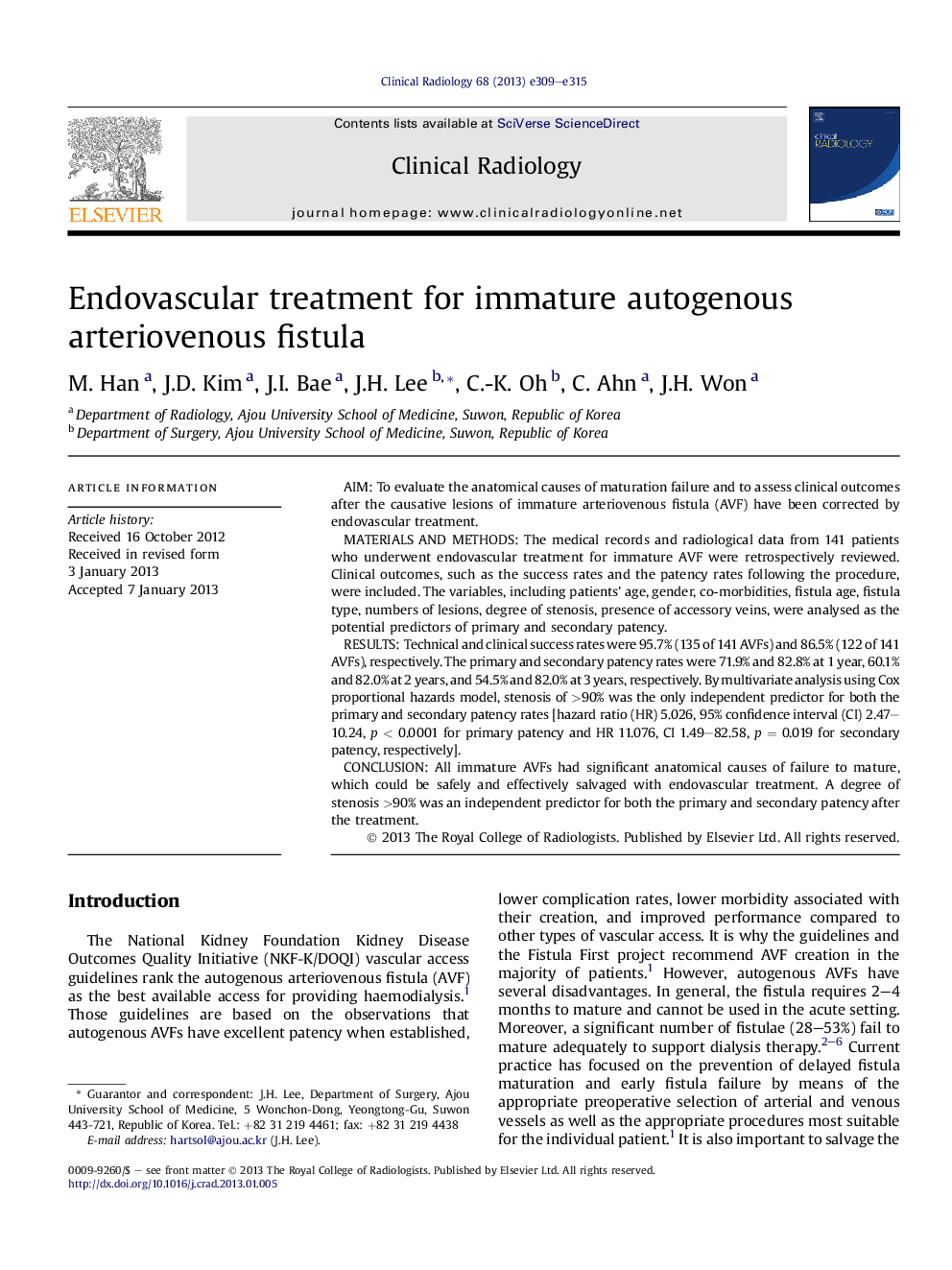| Article ID | Journal | Published Year | Pages | File Type |
|---|---|---|---|---|
| 3981902 | Clinical Radiology | 2013 | 7 Pages |
AimTo evaluate the anatomical causes of maturation failure and to assess clinical outcomes after the causative lesions of immature arteriovenous fistula (AVF) have been corrected by endovascular treatment.Materials and methodsThe medical records and radiological data from 141 patients who underwent endovascular treatment for immature AVF were retrospectively reviewed. Clinical outcomes, such as the success rates and the patency rates following the procedure, were included. The variables, including patients' age, gender, co-morbidities, fistula age, fistula type, numbers of lesions, degree of stenosis, presence of accessory veins, were analysed as the potential predictors of primary and secondary patency.ResultsTechnical and clinical success rates were 95.7% (135 of 141 AVFs) and 86.5% (122 of 141 AVFs), respectively. The primary and secondary patency rates were 71.9% and 82.8% at 1 year, 60.1% and 82.0% at 2 years, and 54.5% and 82.0% at 3 years, respectively. By multivariate analysis using Cox proportional hazards model, stenosis of >90% was the only independent predictor for both the primary and secondary patency rates [hazard ratio (HR) 5.026, 95% confidence interval (CI) 2.47–10.24, p < 0.0001 for primary patency and HR 11.076, CI 1.49–82.58, p = 0.019 for secondary patency, respectively].ConclusionAll immature AVFs had significant anatomical causes of failure to mature, which could be safely and effectively salvaged with endovascular treatment. A degree of stenosis >90% was an independent predictor for both the primary and secondary patency after the treatment.
